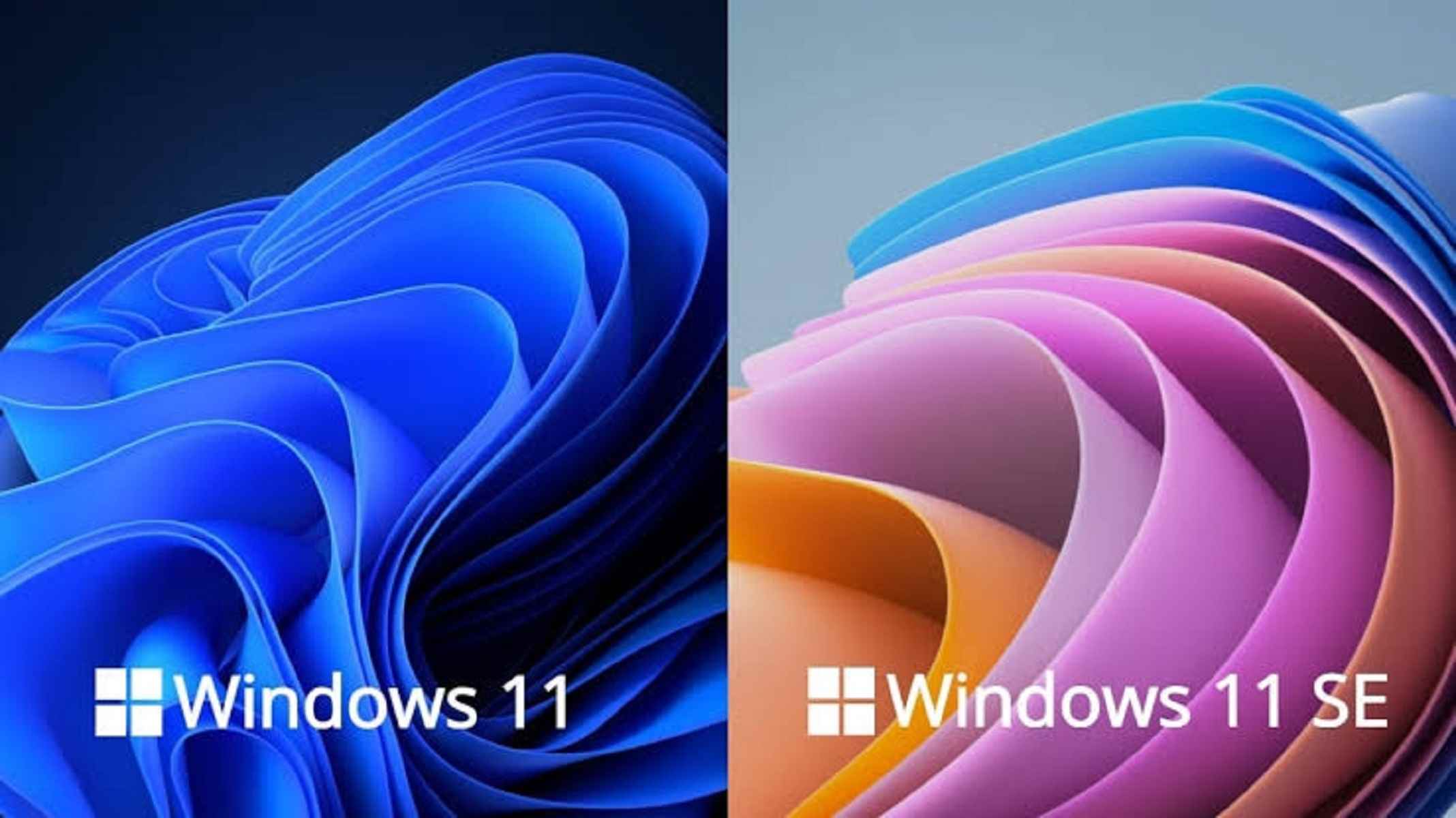Windows 11 SE is a cloud-focused version of Windows 11, that offers the power and reliability of Windows 11 with a simplified design and modern management tools that are optimized for low-cost devices in educational settings, especially grades K-8 (up to 14 years old). Aimed at education and students, Microsoft is competing with Google’s ChromeOS, with Windows 11 SE. Windows 11 SE has the same accessibility, security, privacy, and remote learning benefits as Windows 11, with the added advantage of being optimized to deliver great education experiences on low-cost devices, removing distractions to help students stay focused, and simplifying deployment and management for IT professionals.
Contents:
- SE stands for?
- Differences
- Snap Layouts
- Widgets
- Third-Party Installations
- Limited App Support Settings
- Hardware Support
3. Where to install Windows SE?
4. Requirements
5. Compatible Laptops
6. Conclusion
1. What Does SE in Windows 11 SE Stand for?
Microsoft clearly mentioned that SE stands don’t have any Full Form, so it is not Student Edition, so does it stands for Special Editon? Might be. But it does fall under Microsoft’s Education Umbrella, as the main objective of this edition is to provide a secure, fast, distraction-free environment for education.
2. Differences
There are various differences b/w Windows 11 SE and Windows 11, so let’s discuss them in detail:
Windows 11 SE vs Windows 11: Snap Layouts
Microsoft improved the multitasking experience on Windows 11 with its new Snap Layouts feature. While you get six handy Snap Layout options in Windows 11, Windows 11 SE simplifies this by offering only two Snap Layouts. They let you use two apps side-by-side on your laptop at the same time. Speaking of app snapping, it’s also worth mentioning that all apps launch in fullscreen mode by default in Windows 11 SE. That seems right because most Windows 11 SE-backed budget laptops will ship with smaller screens.
Windows 11 SE vs Windows 11: Widgets
With Windows 11, Microsoft added a widgets panel that shows you the latest news, weather, photos, sports scores, and more. This Windows 11 feature is not present in Windows 11 SE, and that’s a good thing. Microsoft wants to keep things light with this education-focused version of Windows 11.
Third-Party App Installations?
One major difference in Windows 11 SE is the absence of the Microsoft store, also windows 11 SE does limit the installation of Win32 apps. However, there are six categories of apps that Microsoft allows you to sideload on a Windows 11 SE-powered computer. The IT admin can have the access to install or remove any app, covered under these six categories:
- Content-filtering apps
- Test-taking solutions
- Accessibility apps
- Effective classroom communication apps
- Essential diagnostics, management, connectivity, and supportability apps
- Browsers
Also Read: How To Install Windows 11 On Virtualbox VM
Limited app support and settings
There is a ceiling to what you can do on your Windows 11 SE device. The education-centric OS doesn’t support all legacy Win32 and UWP apps available in the Microsoft Store or elsewhere. In fact, the company says it doesn’t even offer Microsoft Store for the new OS.
Also, the kids might not be able to tweak some settings as well. Windows 11 SE will allow IT admins to install apps and manage important settings across the OS.
Hardware support
It’s not just software, and Windows 11 SE is also cutting corners in the hardware department. The lightweight OS won’t run on laptops with a powerful CPU, RAM exceeding 8GB, or storage exceeding 128GB. For reference, the Pro edition of Windows can support up to 2TB of RAM.
One plus point is that Windows 11 SE is optimized to improve the performance of apps running in the foreground.
If you see the other side of the coin, this limitation will ensure Windows 11 SE laptops aren’t offered at pocket-burning prices. Microsoft’s Surface Laptop SE will pack an Intel Celeron processor with 4GB/8GB RAM and 64GB/128GB eMMC storage.
3. From where can you Install Windows 11 SE?
You can’t install Windows 11 SE on any of your personal computers, as Microsoft has not released any ISO file. Microsoft is not looking forward to making Windows 11 SE available to retail users, as they have the regular Windows 11. Windows 11 SE is only available pre-installed on new Windows 11 SE-compatible devices, made available to educational institutions.
4. Windows 11 SE System Requirements
- Processor: 1 gigahertz (GHz) or faster with 2 or more cores on a compatible 64-bit processor or System on a Chip (SoC)
- RAM: 4 GB or 8 GB RAM Only
- Storage: 64 GB or 128 GB Only
- Graphics card: Compatible with DirectX 12 or later with WDDM 2.0 driver
- System firmware: UEFI, Secure Boot capable
- TPM: TPM Trusted Platform Module (TPM) version 2.0
- Display: High definition (720p) display, greater than 9-inch and 8 bits per color channel support
- Internet connection and Microsoft account
5. Windows 11 SE Compatible Laptops
With the launch of Windows 11 SE, Microsoft mentioned a few brands that will make low-cost laptops that will ship with Windows 11 SE.
Here’s the compatible list of laptops:
- Microsoft Surface Laptop SE ($249)
- Dell Latitude 3120 ($249)
- ASUS BR1100C ($249)
- Lenovo 100W Gen3 ($269)
- Acer TravelMate B3 ($279)
- Lenovo 300W Gen3 ($329)
- Acer TravelMate Spin B3 ($329)
- Dell Latitude 3120 2-in-1 ($349)
- ASUS BR1100F ($349)
- Lenovo 14W Gen 2 ($379)
Conclusion
So, this was all about Windows 11 SE, as compared to Windows 11. Should you go for a Windows 11 SE computer? Well if you want a low-cost, fast, secure, and distraction-free laptop for your kid, but feel ChromeOS is too basic. Then you can definitely go Windows 11 SE, as it will help your kid stay focused on studies.
This is all about this article. We hope this is helpful for you. In case you face any issues, please feel free to contact us through the comments section.



































